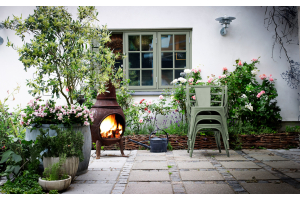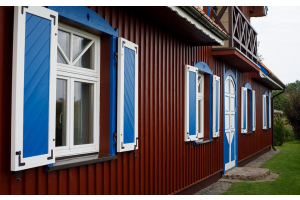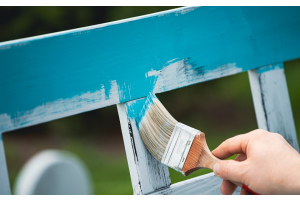- Tinted Paints
- Interior Emulsion Paint
- Interior Trim Paint
- Interior Varnishes & Oils
- Interior Furniture Paint
- Anti Mould Paint
- Anti Damp Treatment
- All Surface Primer
- Special Surface Primer
- Floor Paints & Coatings
- Exterior Paint
- Exterior Masonry Paints
- Exterior Trim Paints
- Exterior Paint Undercoat
- Exterior Oils & Varnishes
- Shed & Fence Paints
Painting secrets that the professionals don’t want you to know
Do you struggle to get a perfect finish when it comes to painting and does the thought of painting your home fill you with dread? Well, fear not, with some simple advice, the right tools and plenty of practice you can learn the secrets to achieving a professional finish. In this article, we’ll take a look at some of the secrets of the trade to help you achieve better results when it comes to painting and decorating.
Start with smooth walls
Whether you are starting off with a freshly plastered wall or decorating over an existing coating, one of the things that separate professionals from the rest of us is taking the time to prepare the walls properly. One of the tools that will help you get perfectly smooth walls is a pole sander which can be used with fine-grit sandpaper to sand from the top to the bottom of a wall with ease. Pay particular attention to sanding holes that have been filled and ridges as these will show up the most when painted.
Use a paint conditioner
Want to get rid of brush marks in your paintwork? A paint conditioner such as Floetrol will help to improve the flow of your paint and act as a sort of self-levelling device for your paint helping to smooth out brush strokes and roller marks. It also makes the drying time longer helping to give you more time to cut in and blend with a roller before the paint dries.
Complete one wall at a time
Here’s a handy hint for you. The professionals cut in one wall at a time before using the roller as this creates a much better finish and allows them to blend the paint in at the edges of the room. Most DIY painters will think they are saving themselves time by doing all of their cutting in jobs in one go before filling in the walls with the roller, but this will lead to a poor quality finish. Keep your paint and brushes ready to use between coats and stop them from drying out by covering in a plastic bag.
Don’t tape windows
Taping windows will literally take you hours to do and the likelihood is that you will usually end up with paint running onto the glass anyway. A simpler solution is to use a razor paint scraper to get any excess paint off your glass when the paint has dried. The paint will come off in seconds and give you a perfectly clean finish.
Mix different paint tins together
If you’ve bought 2 tins of the same colour for your room, then it is always best to mix these together to help ensure that the colour is consistent. It may seem like a lot of additional work and hassle, but this step is worth it for a professional-looking paint job. This is especially true when you buy paint from a DIY superstore as different batches of paint can have slight differences.
Wash your roller sleeves
We don’t mean put them in the washing machine. Prior to the first use, you should always wash new roller sleeves in warm soapy water running your hands up and down the sleeves. This will help to get rid of any fluff and loose fibres which would end up ruining your paintwork. Shake your washed sleeves to remove excess water and you can start using them immediately without needing to let them dry.
Sand woodwork between coats
For the best finish on wooden trim such as picture rails, door frames and skirting board you should always lightly sand between coats. This will help give the surface a key for the paint to adhere to and help provide a better finish. A light sanding will also help to remove any bubbles, ridges or bits of dust from the previous coat. Use a fine 180 or 220 grit sandpaper and vacuum and wipe with a tack cloth to remove any dust.







